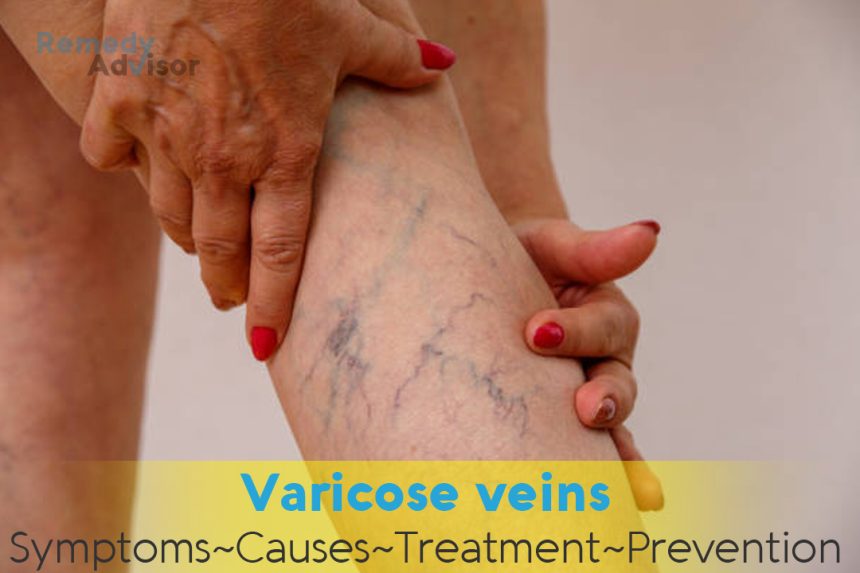What is it
Varicose veins occur when the tiny valves that regulate blood circulation in the legs malfunction, creating swollen, often tender leg veins near the skin surface. Doctors aren’t sure why some people and not others are predisposed to this condition, which typically appears on the back of the calf or anywhere along the length of the inside part of the leg.
Sensitive and prominent veins can be unsightly and uncomfortable, and they can also induce fatigue, aching, and scaling along the legs. In severe cases varicose veins may cause swollen ankles, itching calves, and leg pain. Hereditary and, apparently, hormonal factors are at work: varicose veins run in families, and of the more than 40 million Americans affected, women outnumber men four to one.
Symptoms
- Enlarged, swollen, snakelike purple or blue veins, usually in the back of the calf and inner side of the thighs.
- Heavy, aching, tired feeling in the legs, accompanied by occasional pain ranging from a dull throb to a burning sensation.
- Brownish gray discoloration, scaling, or itching above the affected veins, particularly around the ankles (advanced cases).
What causes it
In most cases the exact cause of varicose veins is unknown. Prolonged standing or inactivity can cause varicose veins in people genetically inclined to develop them. Strain in the abdominal region from repeated heavy lifting, pregnancy, or constipation can also be a cause. (During pregnancy, increasing hormone levels may also cause the veins in legs to weaken, contributing to varicose veins.) Age is also an important factor. As the skin ages it becomes less elastic and therefore cannot support veins as firmly.
Gravity also plays a role. When you are standing, the heart pumps blood through the arteries to the legs with assistance from gravity. Muscle contractions are required to recirculate blood against gravity up through the veins which lie just under the skin (superficial veins) as well as deep in the legs back to the heart. Valves in the veins keep blood from draining back down the legs, hi many people these valves stop working efficiently, causing blood to accumulate in the superficial veins, distending them into a network of lumps that are visible just underneath the skin.
What if you do nothing
Varicose veins are usually benign and more of a cosmetic than a medical concern. Without treatment, though, the veins usually worsen with time (unless they are associated with pregnancy, in which case they usually disappear after the birth). If you have a severe case, especially one that involves leg sores, contact your physician.
Home remedies
Support your legs
Special support stockings, available at surgical supply stores, can improve circulation somewhat but won’t cure your condition. These stockings, which can be custom fitted, come in knee and full-length styles, and as panty hose. The stocking should have a compression pressure of 25-30 or 30-40 millimeters of mercury, depending on the size of the veins. They are put on in the morning before your feet touch the floor and taken off just before going to bed.
Elevate
Keep your legs up higher than your heart as often as you can to improve circulation.
Prevention
If you’re prone to varicose veins, you may be able to prevent them, minimize their occurrence, or lessen discomfort with these measures.
Walk regularly
This keeps your calf muscles strong and helps them pump blood through your legs. It also improves overall circulation and keeps blood from pooling in your legs.
Avoid prolonged standing or sitting
This will keep blood from pooling in your legs. Get up periodically and walk around. You can also perform simple heel rises to get the calf muscle pumping blood back to the heart. To perform a heel rise, stand flat-footed, then rise up onto the balls of your feet, hold that position momentarily, then go back to the floor. Repeat this exercise 10 to 20 times.
Don’t cross your legs
Crossing your legs puts pressure on the leg veins.
Don’t wear tight clothing
This includes tight shoes, panty hose, belts, girdles, and garter belts all of which can compress and restrict the veins around the legs, making it hard for the blood to move upward.
Maintain a healthy weight for your age and height
Weight gain may cause new varicose veins to appear.







